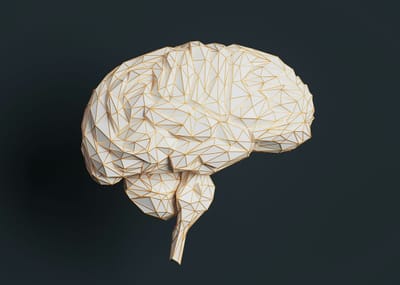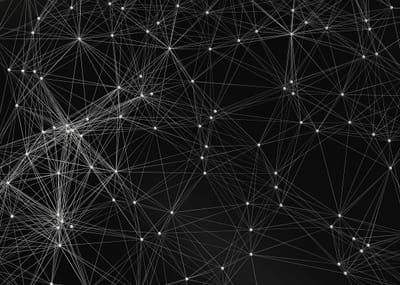
Reflections on Chapter 1 of Robert Cialdini’s “Influence”
The moment we believe we are firmly in charge is often the very moment subtle triggers begin directing our thoughts and actions. This opening chapter reveals how easily we can be nudged by price tags, soothing words, or flashes of authority. Robert Cialdini shines a light on what he calls levers of influence and shows us how they work, why they sometimes fail us, and where they can be spotted in everyday situations. Below is a closer look at the chapter’s core ideas, why they matter, and how they can shape our decisions without our realizing it.
Summary
Chapter 1, “Levers of Influence,” begins with an observation that we humans often respond in automatic ways to certain triggers. Cialdini introduces the idea that animal behavior can look almost robotic because it follows fixed patterns. He tells the story of a mother turkey, who cares for anything that makes the cheep sound. Even a stuffed polecat (a natural enemy of turkeys) becomes an object of her motherly affection if it emits that single noise. This is funny, yet it leads to a deeper point. We, too, have our own automatic triggers guiding our behavior.
He shifts to human examples. For instance, people sometimes solve puzzles more effectively if they think they paid a higher price for a so-called energy drink. We want to believe an expensive aid works better simply because it costs more. He also recalls an Arizona jewelry store incident where unsold turquoise pieces finally sold out only after their price was doubled by mistake. That counterintuitive success was driven by the mental shortcut “expensive means good.” In a world overflowing with complexity, these shortcuts save time and mental effort, acting as cognitive shortcuts so we don’t overthink every detail. (From an evolutionary perspective, being able to make quick, simplified judgments helped our ancestors survive.) But as Cialdini points out, these same shortcuts can be exploited when someone deliberately fakes the trigger.
The chapter then describes how simple cues can launch us into a script of compliance. If we hear a certain word or see a particular signal, we might obey without thinking. Cialdini refers to this as a “click, run” behavior — like pressing play on a mental tape recorder. One classic example is the Langer study involving the word “because,” which shows that this single term can make people yield to a request even if the reason provided is meaningless. Just hearing “because…” puts us on autopilot. He also addresses a phenomenon he calls “Captainitis,” where junior flight crew members fail to question a captain’s obviously bad decision because the expert label triggers automatic deference to authority. These examples demonstrate that a magic word or an imposing title can short-circuit our judgment.
Near the end, Cialdini discusses the contrast principle, explaining that if people see a terrible house or an overpriced suit first, a merely average option that follows will feel like a great deal. When something less appealing is shown side by side with something better, the better item looks even more attractive than it would on its own. We’ve all experienced this: a $50 sweater feels expensive until you first try on a $500 jacket, suddenly the sweater seems reasonably priced by comparison. Throughout the chapter, Cialdini emphasizes that our mental shortcuts typically serve us well in simplifying decisions, but someone who knows which triggers to pull can nudge us into decisions that go against our interests. His closing warning is that these levers of influence are most powerful precisely because we often do not notice when they’re being pulled.
Core Ideas
One key idea is the notion of fixed-action patterns or the “click, run” pattern. Cialdini uses the mother turkey story to illustrate how a single trigger can activate an automatic response. Humans have a similar tendency: for example, we might pay extra for a product simply because a high price makes us assume it’s higher quality. In these moments, we’re relying on automatic reasoning, what psychologists call heuristics, especially in a busy environment where we can’t evaluate every angle. This matters because these mental shortcuts do save us time and energy, yet they can lead us astray when the usual signal is faked or manipulated. The reason the mother turkey is fooled by a stuffed polecat that goes “cheep” is the same reason we might be fooled by a high-priced item that has no genuine quality behind it.
Another major idea is the contrast principle. Once we’ve been exposed to something significantly more extreme (whether more expensive or more negative), anything that follows looks more reasonable by comparison. Cialdini shows how a real-estate agent might leverage this by first taking clients to see two dreadful, overpriced houses. The third house, which is merely decent and fairly priced, suddenly seems like a dream home. The effect is subtle but powerful. A salesman might have you try on the priciest suit in the shop first, so that a moderately pricey sweater feels cheap afterward. Our perception shifts automatically: when we mentally “reset” our baseline to the extreme case, the next option gets judged against that backdrop instead of on its own merits.
Personal Insights
I see these forces at play in my own life, and I suspect I’m not alone. Early in my career, I was eager to invest in productivity tools and software. I automatically assumed the most expensive option had to be the best. I remember purchasing a top-tier project management app with all the add-ons, thinking a higher price guaranteed higher productivity. My wallet got lighter, but the actual results were mixed. In hindsight I was simply under the influence of the expensive-means-good rule, letting price stand in for quality without checking if it truly was better.
I have also been in meetings where someone with an imposing job title made an obviously flawed proposal. I stood by in silence, nodding along. It was my version of Captainitis. I told myself I was just respecting the expert’s experience, but in reality I was letting a label prevent me from thinking critically. It’s unnerving to realize how easily I surrendered my own judgment in that situation, simply because an “authority” figure was in the room.
I’ve even caught myself complying with requests just because I heard the word “because.” For example, a coworker might ask, “Could you handle this report for me, because I’m in a rush?” and without a second thought I’d agree, as if the very presence of because made the request reasonable. The excuse after because could be flimsy, but my brain zeroed in on the cue that a justification was given, no matter how trivial. It’s a subtle trigger, but it often worked on me until I learned to pause and consider if the reason actually made sense.
When I shop for big-ticket items, I can see the contrast principle playing out in real time. If I test-drive the premium luxury car first, a mid-range car feels like a relief to my budget in comparison, even if it’s still expensive. The same goes for browsing TVs or laptops: after looking at the top-of-the-line model, the next option down seems like a bargain. More than once I’ve almost talked myself into an upgrade I didn’t need, just because the fanciest choice made the lesser one look so reasonable. It’s exactly the phenomenon Cialdini outlines, and it’s both clever and a little sneaky. In the heat of the moment, especially when time is short or I feel pressured, my mind grasps at these shortcuts to simplify the decision.
Practical Applications
Recognizing these patterns in myself was the first step. The next step is learning how to decide consciously when those levers are being pulled. I’ve learned to pause whenever a single piece of information is pushing me toward a snap decision. In practice, this means staying alert for that gut feeling of being on mental “autopilot.” If I notice a particular label or credential is overriding my judgment, I make a point to slow down and ask more questions. For example, in a sales environment if the very first option I’m shown is unreasonably expensive or grand, I immediately suspect the contrast principle is in play. I remind myself that the next option might only feel better by comparison, not because it truly fits my needs. That little mental reminder helps me resist the urge to say “yes” to a so-so deal just because I was first shown an awful one.
There is also the matter of handling requests that lean on a single “magic” word or phrase. Now, when I hear a coworker insist we must do something “because it’s best practice,” I politely ask them to elaborate: Why is it best in this case? I essentially try to strip away the buzzword or the because and see if the reasoning still stands on its own. If a salesperson is leaning heavily on the idea that a higher price means higher quality, I’ll do my own research and look for actual evidence of quality. That extra mental step often reveals whether I’m dealing with a genuinely good product or just someone nudging my primal buttons. By questioning the reason and removing the autopilot script (“because… therefore…”), I give myself a chance to make a decision based on facts and true value rather than reflex.
None of this means I ignore my instincts completely, but it does mean I try to double-check why I’m inclined to say yes. These small habits, like pausing briefly, asking a follow-up question, comparing options more objectively, are simple but effective. They keep me from being an easy mark for those who know how to push the right buttons. In everyday life, whether it’s an impulse purchase or a colleague’s suggestion, taking a moment to think twice ensures that my choices are truly my own, not just the result of a well-aimed trigger.
Additional Resources
For readers interested in exploring the psychology behind these decision shortcuts and automatic behaviors, here are a few excellent resources (with what each contributes to the topic):
- Thinking, Fast and Slow by Daniel Kahneman — A deep dive into the two modes of thought that drive our decisions. Kahneman, a Nobel-winning psychologist, explains how our fast, automatic thinking (System 1) uses mental shortcuts and heuristics, and how it can lead us to error or serve us well. This book gives insight into why our brains rely on quick rules of thumb — very much related to Cialdini’s “click, run” ideas — and how our slower, deliberate thinking can sometimes correct or override those impulses.
- Predictably Irrational by Dan Ariely — A behavioral economist’s look at the hidden biases that twist our decision-making. Ariely uses witty experiments to show how we routinely make irrational choices in predictable ways — for example, how pricing tricks or the allure of a “free” bonus can influence us. This book expands on the idea that our sense of value and reason can be easily swayed by context (much like the contrast principle or expensive=good rule), giving plenty of relatable everyday examples of these mental levers in action.
- Pre-Suasion by Robert B. Cialdini — In this follow-up to Influence, Cialdini explores how setting the stage before making a request can dramatically increase the chances of getting a yes. It’s an eye-opening complement to Chapter 1 of Influence: while the original chapter shows how triggers affect us in the moment, Pre-Suasion shows that our attention and mindset can be primed in advance. It reveals additional tactics of influence like the strategic use of timing, framing, or seemingly innocent cues, that make us more susceptible to persuasion even before we encounter the actual influence attempt.
Each of these works helps illuminate how our mental shortcuts hide in plain sight, shaping the choices that feel almost automatic in day-to-day life. Understanding them further not only satisfies curiosity, it arms us with knowledge to make better, more mindful decisions when it counts.
Enjoyed this piece?
If this piece was helpful or resonated with you, you can support my work by buying me a Coffee!

Become a subscriber receive the latest updates in your inbox.






Member discussion